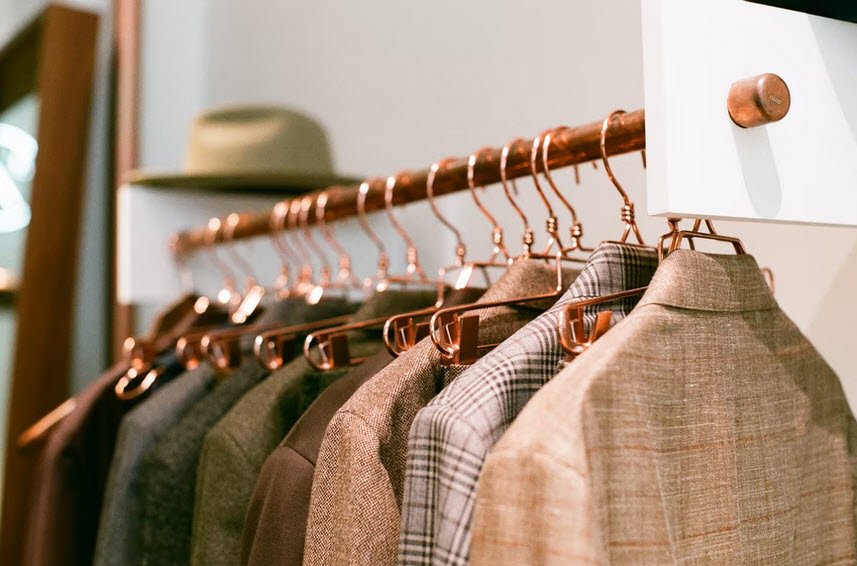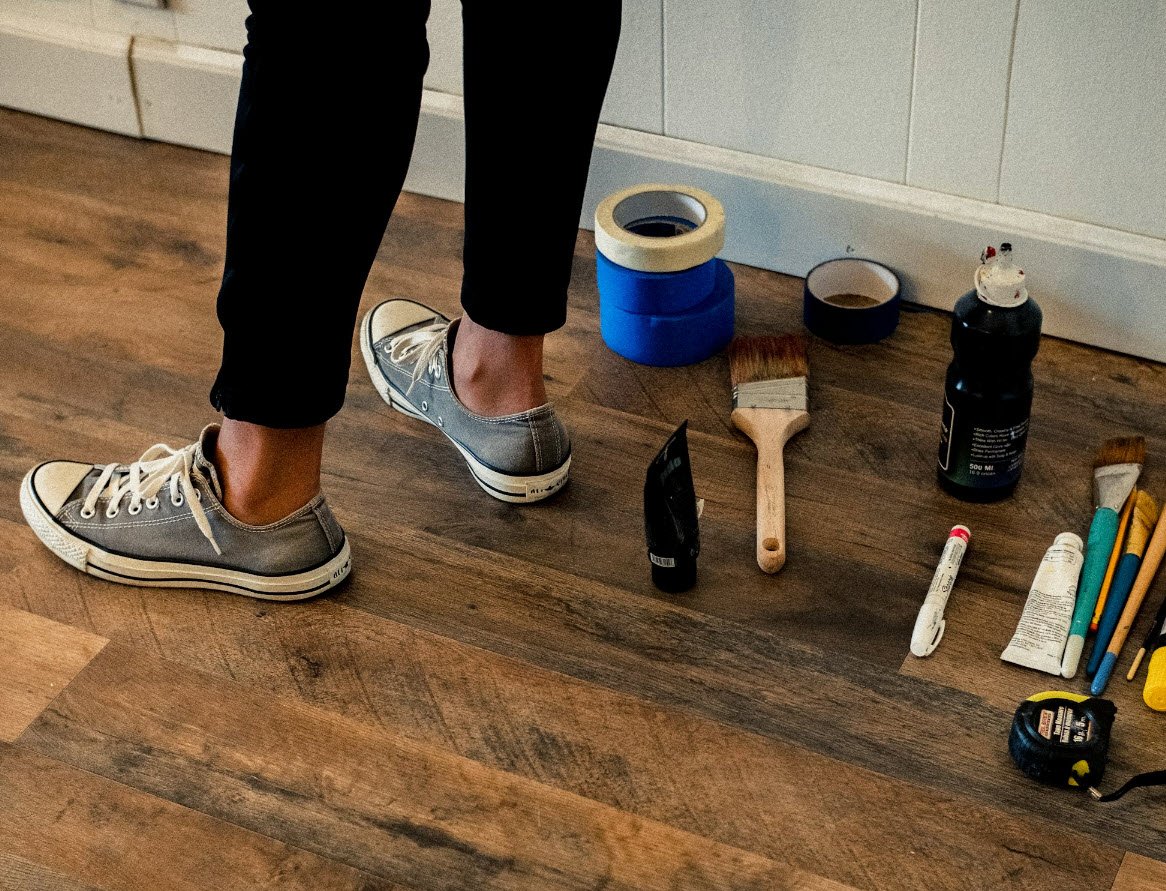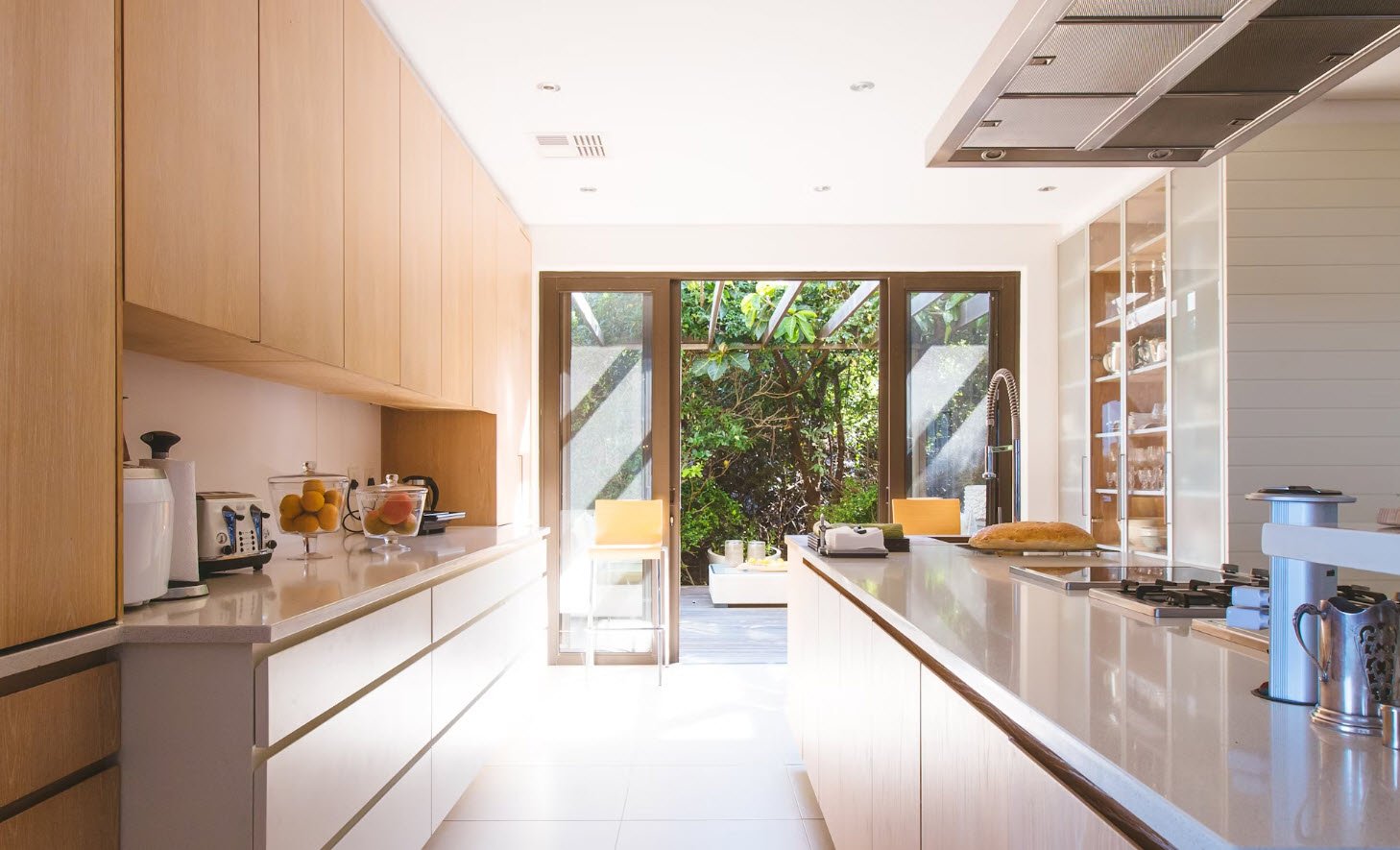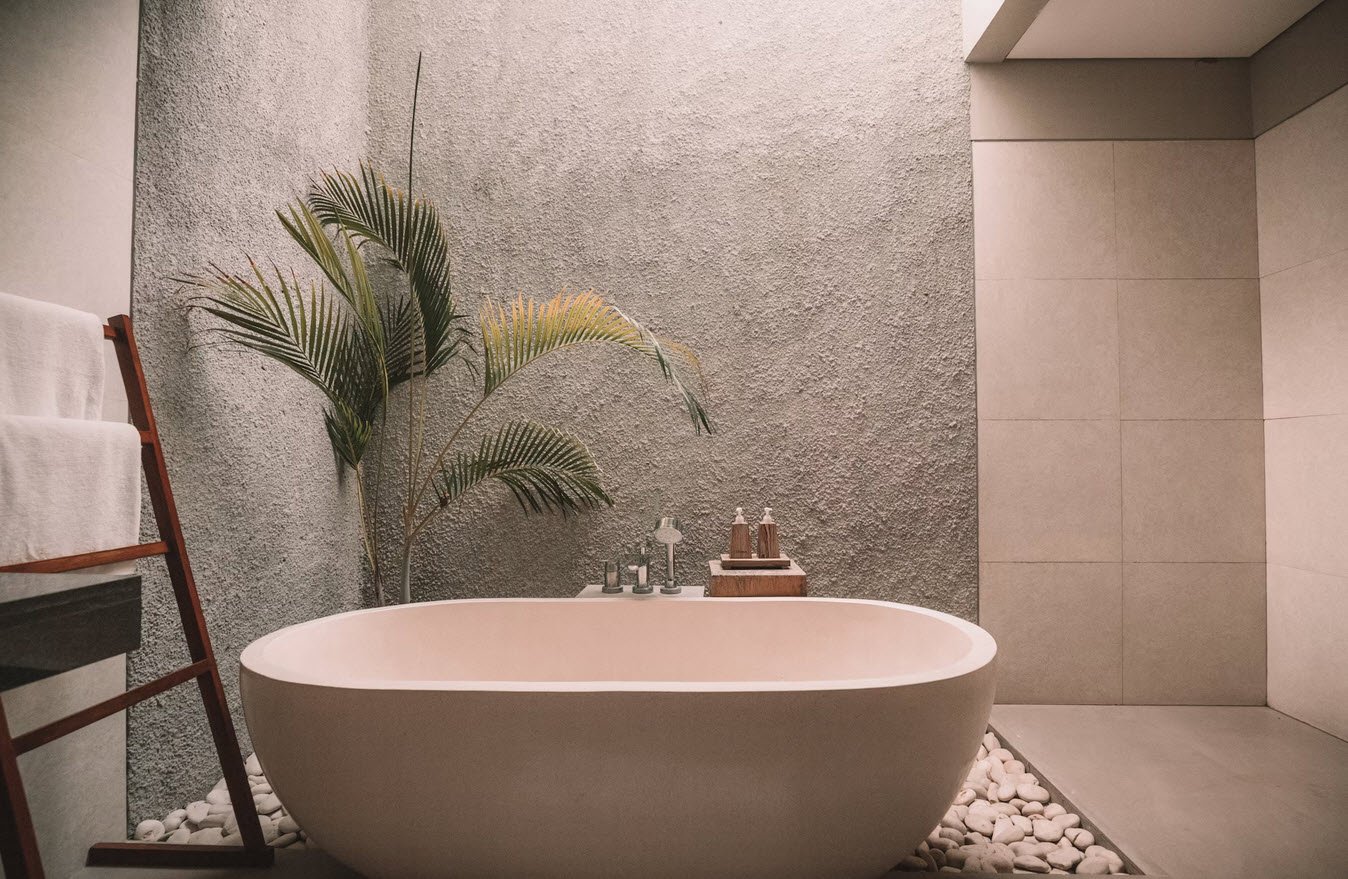
Keeping in mind the emerging consciousness of changing fashion trends, this article has introduced some useful important terms related to cutting and tailoring who have an interest in sewing not only as an outlet for their creative urges but also those who want to supplement the family income and are learning sewing as a means of livelihood.
Also Read:
To stitch any beautiful garment, various steps have to be undertaken.
1. Balance Marks:
Marks made on the various pieces of the garment to maintain a balance while stitching. Sometimes the pieces not marked may not be matched properly at the time of stitching giving the garment an odd shape. Used mainly to keep a balance when joining knees, waist, hip etc. A balanced garment fits well and hence it is essential to use these marks, even when one has become a master at tailoring.
2. Balance Notches:
These are small cuts made at the time of tracing the pattern. Made mainly to mark out pleats, darts, overlapping. Also used at times to mark the side seams, waist, and knees.
3. Balance Marking
Points marked with the help of a tracing wheel are known as balance marks. Sometimes one needs to put the marks on the right side of the fabric, putting these marks with tailor chalk or a marking pencil, may spoil the cloth. That is when the tracing wheel is used. The tracing wheel can also be used to mark various layers of cloth at one go – for pocket positions etc.
4. Bagging
Garments that take the shape of a bag like slacks, pyjamas, which are tight at the knee or elbow. These are always in the danger of the crease opening at the elbow/knee joint due to movement. A small bag like pouch is formed at these places, if the garment is too tight. This is known as bagging.
5. Bridle
When the lapel turns outwards in a collar, like in a coat the large fold is cut on bias, and to avoid it flapping a straight tape is attached at the edge. This is known as the bridle.
6. Lapel
When the collar hangs separately from the over lapping and is folded outwards, it is known as lapel.
7. Cut On Double
When the fabric is folded before cutting, it is known as cut on double or on fold. Most parts of the garment –front, sleeve, back are cut in this manner.
8. Laying
The fabric is first out spread out properly, without any creases or folds and only then is the pattern traced out and the fabric cut. The laying of the fabric properly is known as laying.
9. Layout
To put the different pattern pieces on the cloth is known as layout. This helps in checking if the cloth is enough or if a patterned cloth has different pieces with matching pattern.
10. Closing
Means attaching a means of closing an opening – it could be a hook, a button, a zip or a cord.
11. Facing
Finishing an edge of the garment- neckline, armhole, or other opening by attaching a separate piece of cloth (of same or different fabric). This piece is cut in the same shape as that of the opening.
12. False Facing
A broad strip of cloth attached to an edge and turned inside to finish the edge instead of hemming is known as false facing. A thinner strip of cloth being attached is known as false hem.
13. Dart
Without spoiling the shape of the garment, and in order to give a perfect fit, a small amount of cloth is folded and stitched with a single strand till the other end. This process is called putting a dart. It is used at various places on the garment like bust dart, waist dart etc. to give fitting or fullness to shape.
14. Fish Dart
This is put at the back in lower body garments like shorts, trousers, slacks. Its shape is like a fish, hence the name. It takes an angular shape after being put straight for some distance.
15. Pleats
A fold taken from the inside of a garment and held in place by a stitch is known as a pleat. These are of many types like straight pleats, inverted pleats etc. These are used either as a design element or to provide fullness or fitting.
16. Tucks
Folding the cloth a little from the right side and stitching in a straight line is known as putting a tuck. This is also used to enhance the beauty of the garment or to provide a better fit. If these stitched lines appear of the thickness of a pin then they are known as pin tucks.
17. Vent
A type of closing which is stitched at the top but open at the bottom. Generally put at the back. The two pieces of the garment being held together by this seem to overlap each other. The stitch is not visible from outside.
18. Slit
A type of opening which does not have any overlapping. Used in women’s garments like shirts, skirts etc.
19. Welt
Also known as fich. This is a broad band on the pocket of a coat. This is stitched from both sides. A pocket which has the stitch on the outside is used on shorts, trousers, slacks, T-shirts etc.
20. Opening
The space kept in the garment for ease of wearing and taking off, generally without any overlapping is known as opening.
21.Placket
An opening finished by keeping an overlap is known as a placket. Examples are a frock back or a kurta neck.
22. Stand of Collar
When the collar is put against the garment and the place where the fold happens-the part that comes beneath is known as stand of collar. This is the part that touches the neck.
23. Fall of Collar
The part of collar that is attached above the band or the broad part that falls below or outwards from the band or stand is known as the fall of collar.
24. Flair
These are of two types – Straight and umbrella cut. The straight flair is attached at the waist by the help of gathers, tucks or pleats and the part that is left loose is called the flair. Also used to describe lower body garments which have a big opening at the bottom and no demarcation for knees.
25. Gathering
Means to put pleats or to gather a piece of cloth by putting a loose running stitch and then pulling the thread. Look good when used on puff sleeves, skirts, ladies garments and children’s garments according to
fashion.
26. Jetting
When an extra piece of cloth is attached to give strength to a pocket and then to hide this extra piece, another piece of the same fabric as that of the main garment is attached, then it is known as Jetting.
27. Button Stand
The piece of band on top of which a button is affixed is known as button stand.
28. Button Hole
The opening made through which a button can be passed is known as button-hole.
29. Pocket Stay
The straight tape attached to the inside of a pocket opening to keep it upright is known as pocket stay. This tape is the straight selvedge side.
30. Yoke
The part of the garment from the waist upwards, given a particular shape like round, square, triangular and attached separately is known as yoke.
31. Lining
An extra cloth attached under the main garment is known as lining. Used mainly under transparent materials, lining gives the garment extra strength as well as finishing.
32. Inter Lining
An extra layer put in between the main garment and the lining is known as inter lining. For e.g. Buckram, Tetron etc.
33. Shearing
To shorten a part of a garment, without cutting off the extra piece of material, one can create folds on the top half and then hide them by attaching a trim like lace, piping, or a cord. This process is known as shearing.
34. Smoking
Creating a design on a piece of cloth by first putting loose stitches in straight lines with the help of a graph paper, pulling gently on the threads and then embroidering over the gathers thus created, is known as smocking. Used as a decorative stitch.
35. Honey Comb
A variation of smocking. The amount of material required for this is a little less than that for smocking. The space between stitches in smocking is a little less, whereas here the distances are greater. Embroidering over the gathers to hold them in place is done here also. This takes the shape of a honey comb upon finishing.
36. Scye Up and Scye Lower
Used particularly for coat sleeves. The point where the armhole attaches to the sleeves to maintain the correct balance of a sleeve is known as scye. The point at the back is known as scye up and the front part is known as scye lower.
37. Inlays
The extra cloth kept after the looseness in a garment is known as inlays. This helps in increasing the size of the garment if so required. .
38. Turning
The extra margin kept at the edges for turning in and finishing the garment is known as turning.
39. Seam Allowance
The margin kept for stitching the garment is known as seam allowance. This means that after drafting the neck, armhole, waist and chest, about 4cm margin is kept and then another line drawn which is the stitching guide – this is known as the seam allowance.
40. Margin
The extra cloth kept apart from the turning is known as margin. This helps to increase the length of a garment.
41. Fore Pitch
The notch kept in the forward arm hole before joining a coat sleeve is known as fore pitch.
42. Back Pitch
The back notch kept for joining the coat sleeve to the armhole is known as back pitch.
43. Gorge
The depth of the neck is known as gorge. This is used to alter either the breadth or the length of the neck.
44. Button Neck
When extra thread is wound around the bottom of the button but above the bad, then it is known as button neck.
45. Sleeve Head/Sleeve Crown
The top portion of the sleeve where the curve happens is also known as the sleeve crown or sleeve head.
46. Try/Trial/Fitting
When a garment is first fitted on to a dummy to check for fit or tried on the person for whom it is being stitched before putting in the final stitches, then the process is known by either of these namestry, trial or fitting.
47. Dummy
A cloth figure made in the shape of a normal human figure is called dummy. This is used to check for fitting etc.
48. Bias
A square cloth folded into the shape of a triangle and then cut at an angle to the weave is known as bias.
49. Over Lapping
When the cloth of one side of an opening comes over the other, then it known as overlapping.
50. Button Hole Fan
The rounded edge of a button hole is known as the button hole fan.
51. Button Hole Bar
The last action at the time of finishing a button hole where the stitch is finished is known as the button hole bar.
52. Selvedge
The finished edge of the cloth which is a self finished edge at the time of weaving is known as selvedge.
53. Crease Edge
The edge of a garment created by giving a crease is known as crease edge.
54. Plain Weave
An ordinary weave with no interwoven designs is known as a plain weave.
55. Twill Weave
When the cloth is woven with a slanted thread to give a self design effect then it known as twill weave. The right side of this weave is plain and smooth while the wrong side is rough to the touch. E.g. Satin, Taffeta.
56. Padding
When an extra pad is inserted in any part of the garment to enhance that part, then it is known as padding – this may be done on the shoulders, bust or hips. This is made using cotton wool or even a sponge.
57. Warp
The lengthwise direction of the thread while weaving is known as warp.
58. Weft
The breadth wise weave is known as weft.
59. Canvas
Available in many types like cotton, woolen etc. Used for interlining especially in coats.
60. Fork Line
The part where the fly is attached in shorts or trousers.
61. Seat Piece
The place in a trouser where the two legs meet is joined together using a bias cut piece of cloth – this is known as seat piece. This is attached to give a better fit and to ensure that the seams do not open upon wear and tear of the garment.
62. Back Piece
A 3”-4” piece of cloth kept as an extra piece at the back of trousers and attached under the belt.
63. Manipulation
When the seat of a trouser is pressed into place after stitching by using a hot iron or steam.
64. Texture
The surface of a cloth is known as texture.
65. Body Rise
When the crotch breadth is increased in the curved area, the process is known as body rise.
66. Peal Point
The neck at the back being raised by about 2 cm to give a better shape and fit to a collar or a band.
67. Mass Production
When clothes are produced on a large scale like in a factory, then the process is known as mass production.
68. Panels
Strips of cloth joined in a garment for fashion or to increase the width are known as panels.
69. Supression
A hot iron is used to shrink the cloth in places wherever necessary like a waist in a coat or above the hip in a trouser etc.
70. Crotch
The part where a lower body garment is joined with a curve is known as crotch.
71. C.P. G:
A special measuring tape which allows a tailor to take three/four measurements at the same time.
72. Pocket Hang
A straight band kept above a coat pocket which extends till the shoulder, along the side seam to avoid the pocket mouth from hanging out, is known as pocket hang.
73. Flap
An extra piece of cloth attached to the outside of a pocket as a covering for the mouth is known as a flap. Attached on men’s shirt, coat pocket etc.
74. Shoulder Flap
A flap attached on top of the shoulder, mostly on shirts of scout or army personnel etc. Sometimes used as a fashion element also.
75. Seam
These are of many types. Used to attach two pieces of cloth. To give a piece of cloth the shape of a garment is the magic of seams. Seams are the basis of a garment. After cutting the various parts of the garment from a piece of cloth it is these seams either sewn by hand or with the help of a machine which give those various pieces of cloth the shape of a garment.
76. Iron Speaking
A few drops of water sprinkled on the hot surface of an iron to test its readiness to use, turning to steam and letting out a hissing sound is known as iron speaking.
77. Gore
To increase the flair of a bell bottom, a small triangular piece is joined at the bottom opening. This is a type of small panel.








